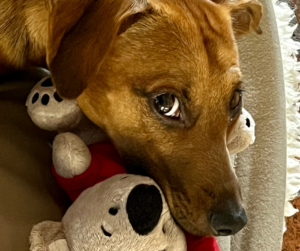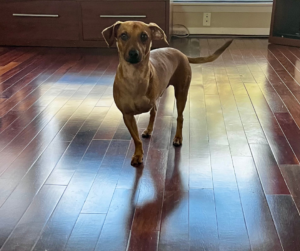Michael Baugh CDBC CPDT-KSA
The best way to train your dog is to stop thinking about it as training.
That might sound weird at first. I teach people how to train their dogs. Right? Yes, I do. I’ve also learned over the years that what we call training is really about much more than teaching our dogs routines and tricks.
Our dogs are always learning. We are too. Our dogs and we are also constantly teaching each other. I used the words always and constantly with intention. Sure, training sessions are great (let’s build some skills together). But, let’s also remember that the learning and teaching doesn’t stop at the end of a session. We are communicating with our dogs every waking moment we share with them. And each moment is an opportunity to learn and teach.
 Here are some ideas to get us started.
Here are some ideas to get us started.
Pay attention to your dog’s bids. John and Julie Gottman coined the term “bids” in interpersonal relationships. A bid is a request to connect. Bids can be big and overt or subtle. A bid from our dog can be a look, an approach, physical contact, or even the offering of a learned behavior.
Reinforce. It’s up to us to notice our dog’s bids and respond. To grow and foster a relationship, we should respond positively, accept the request for contact. The Gottmans call this “turning toward” the bid. We can (and should) take it a step further with our dogs. Reinforce behavior we’d like to see more of (e.g. polite greetings or our dog approaching when we call). Use food or play along with verbal praise. Turn towards your dog’s bid in a big way.
Place a bid of your own. It’s far too easy to ignore our dogs. We expect them to be good, and darned if we don’t miss “good” when it’s staring us right in the face. Stop. Smile at your dog. Talk to them. Get down low and invite some contact. Place a bid. See how they respond. Reinforce the responses you like most. See what happens next.
Now, you’re having a conversation with your dog. You’re learning. Your dog is learning. You are teaching each other. If you do this throughout the day, every day, training stops being a chore. It becomes something joyful you do with your dog. You play. You train. The line between the two becomes blurred. Both are just part of the partnership you and your dog have forged, day after day, little by little, one bid at a time.
Michael Baugh teaches dog training in Houston, TX. He specializes in aggressive dog training.
You might also enjoy: Dog Training – It’s About the Relationship, Silly


